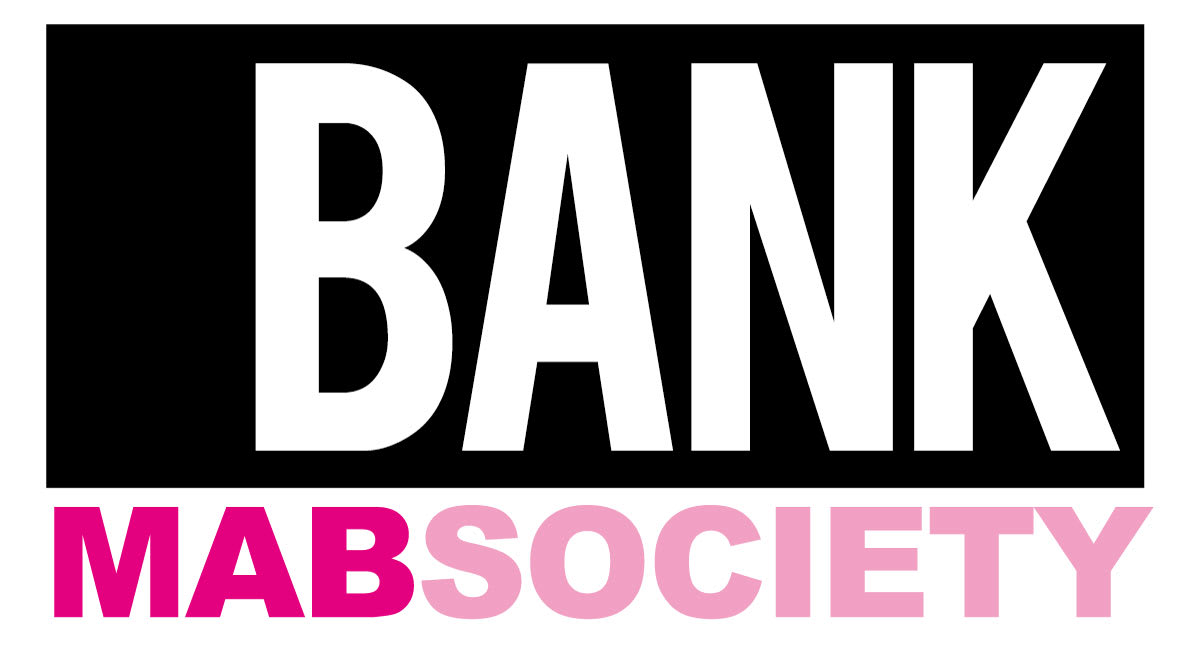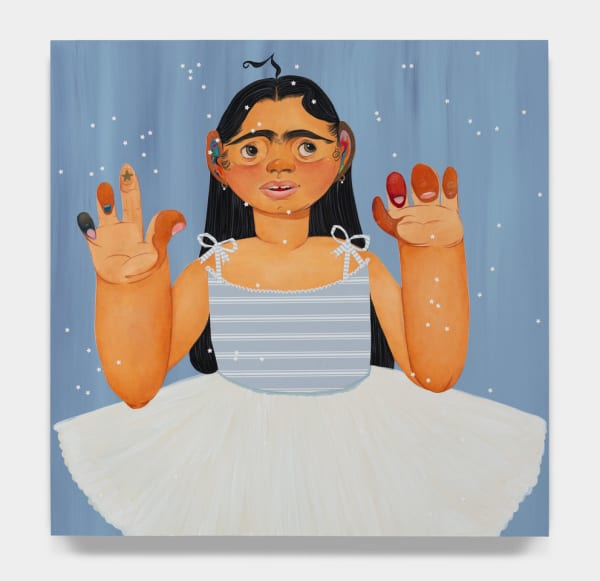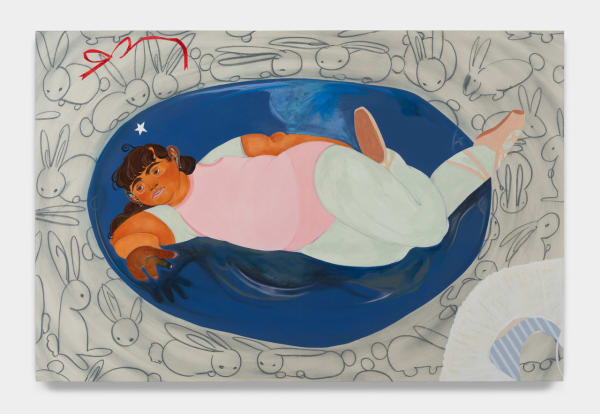Bony Ramirez: 100 Rabbits Minus 1
Past exhibition
Overview
BANK is thrilled to announce Dominican-American artist Bony Ramirez’s debut solo exhibition in Asia, titled "100 Rabbits Minus 1," opening on November 2 and running through January 4. This momentous exhibition will feature Ramirez's distinct blend of media, universal themes, and a surreal narrative style that explores identity, history, and the elusive quest for perfection.
"100 Rabbits Minus 1" is a playful examination of the relentless yet complicated pursuit of perfection. 100, representing wholeness or totality, here is assigned to a school of rabbits. Rabbits, bred in large numbers, are often associated with purity and childhood – a time when the quest for perfection, shaped by parental and societal expectations, begins. Subtracting one from 100 signifies incompleteness and inferiority. “The idea of reaching excellence, to be flawless, is something we all chase,” Ramirez states. “But somewhere along the way, there’s always that extra step, that feeling that 100 is never really achievable. This exhibition explores that gap - between how close we come and how far we feel.”
Through paintings and ceramic sculptures, Ramirez employs the theme of ballet training to explore the complex emotions behind striving for an unrealistic ideal. Ballet schools are notorious for molding young students to the highest standards. The perfect body, pose, and movement are pressed upon the young student, but often at the expense of their integrity and innocence. In these paintings, we witness students in different states of endeavoring towards perfection. Some are determined to stand out; some are frustrated at continually performing; others are disappointed and defeated.
While Chinese philosophy embraces the concept of 无瑕不成玉 or "without flaws, there is no perfection," in Chinese society, people still exert tremendous pressure on themselves and others to excel to unrealistic heights. As society develops, competition in every aspect of life stiffens, leaving those less perfect self-deprecating and wounded by the wayside. Ramirez uses symbols such as stars, numbers, and colors to render society’s system of reward-based achievement. Seemingly celebratory stars permeate Ramirez’s paintings like dreamy precipitation. However, most often, it only remains a dream. Like stars, society always tends to validate a person through numbers- who placed first, how much in the bank, test scores, etc. We are often identified through the numerals we achieve. The color silver is also omnipresent in the show, appearing as an outer side frame for the flat works. Silver is a precious metal, but as much as one tries, it will never be gold. It is still minus one.
The crux of the exhibition is found in “Ninety-Nine Plus One.” The plump figure in the painting lies confidently on the floor, content with her achievements and failures. She understands that perfection is unattainable, as someone will inevitably find a flaw. The star on her head symbolizes that true perfection lies in embracing imperfection and striving for improvement each day.
Bony Ramirez, born in 1996 in Tenares, Dominican Republic, endured a dramatic immigration to the United States at age 13 and never returned to his motherland. Art became the way for Ramirez to connect with his distant culture and childhood memories. Self-taught with only a high school diploma, Ramirez was employed as a construction worker when COVID-19 hit. The pandemic gave him the time and opportunity to focus on his art, leading to an unprecedented, speedy rise in his career.
His recent solo exhibitions include Tropical APEX at Jeffrey Deitch, NY; Bony Ramirez: Cattley at The Newark Museum of Art; CARIBABY, Sugar Hill Museum, NY; CAYMAN TEARS, François Ghebaly, LA, among others. Ramirez was recognized in the Forbes 30 Under 30 Arts & Style category in 2023 and the Artsy Vanguard in 2021. His work is in the public collections of the Museum of Fine Arts, Boston; Pérez Art Museum, Miami; Institute of Contemporary Art, Miami; X Museum, Beijing; and Frye Art Museum, Seattle.
"100 Rabbits Minus 1" is a playful examination of the relentless yet complicated pursuit of perfection. 100, representing wholeness or totality, here is assigned to a school of rabbits. Rabbits, bred in large numbers, are often associated with purity and childhood – a time when the quest for perfection, shaped by parental and societal expectations, begins. Subtracting one from 100 signifies incompleteness and inferiority. “The idea of reaching excellence, to be flawless, is something we all chase,” Ramirez states. “But somewhere along the way, there’s always that extra step, that feeling that 100 is never really achievable. This exhibition explores that gap - between how close we come and how far we feel.”
Through paintings and ceramic sculptures, Ramirez employs the theme of ballet training to explore the complex emotions behind striving for an unrealistic ideal. Ballet schools are notorious for molding young students to the highest standards. The perfect body, pose, and movement are pressed upon the young student, but often at the expense of their integrity and innocence. In these paintings, we witness students in different states of endeavoring towards perfection. Some are determined to stand out; some are frustrated at continually performing; others are disappointed and defeated.
While Chinese philosophy embraces the concept of 无瑕不成玉 or "without flaws, there is no perfection," in Chinese society, people still exert tremendous pressure on themselves and others to excel to unrealistic heights. As society develops, competition in every aspect of life stiffens, leaving those less perfect self-deprecating and wounded by the wayside. Ramirez uses symbols such as stars, numbers, and colors to render society’s system of reward-based achievement. Seemingly celebratory stars permeate Ramirez’s paintings like dreamy precipitation. However, most often, it only remains a dream. Like stars, society always tends to validate a person through numbers- who placed first, how much in the bank, test scores, etc. We are often identified through the numerals we achieve. The color silver is also omnipresent in the show, appearing as an outer side frame for the flat works. Silver is a precious metal, but as much as one tries, it will never be gold. It is still minus one.
The crux of the exhibition is found in “Ninety-Nine Plus One.” The plump figure in the painting lies confidently on the floor, content with her achievements and failures. She understands that perfection is unattainable, as someone will inevitably find a flaw. The star on her head symbolizes that true perfection lies in embracing imperfection and striving for improvement each day.
Bony Ramirez, born in 1996 in Tenares, Dominican Republic, endured a dramatic immigration to the United States at age 13 and never returned to his motherland. Art became the way for Ramirez to connect with his distant culture and childhood memories. Self-taught with only a high school diploma, Ramirez was employed as a construction worker when COVID-19 hit. The pandemic gave him the time and opportunity to focus on his art, leading to an unprecedented, speedy rise in his career.
His recent solo exhibitions include Tropical APEX at Jeffrey Deitch, NY; Bony Ramirez: Cattley at The Newark Museum of Art; CARIBABY, Sugar Hill Museum, NY; CAYMAN TEARS, François Ghebaly, LA, among others. Ramirez was recognized in the Forbes 30 Under 30 Arts & Style category in 2023 and the Artsy Vanguard in 2021. His work is in the public collections of the Museum of Fine Arts, Boston; Pérez Art Museum, Miami; Institute of Contemporary Art, Miami; X Museum, Beijing; and Frye Art Museum, Seattle.
Installation Views
Video
Works









